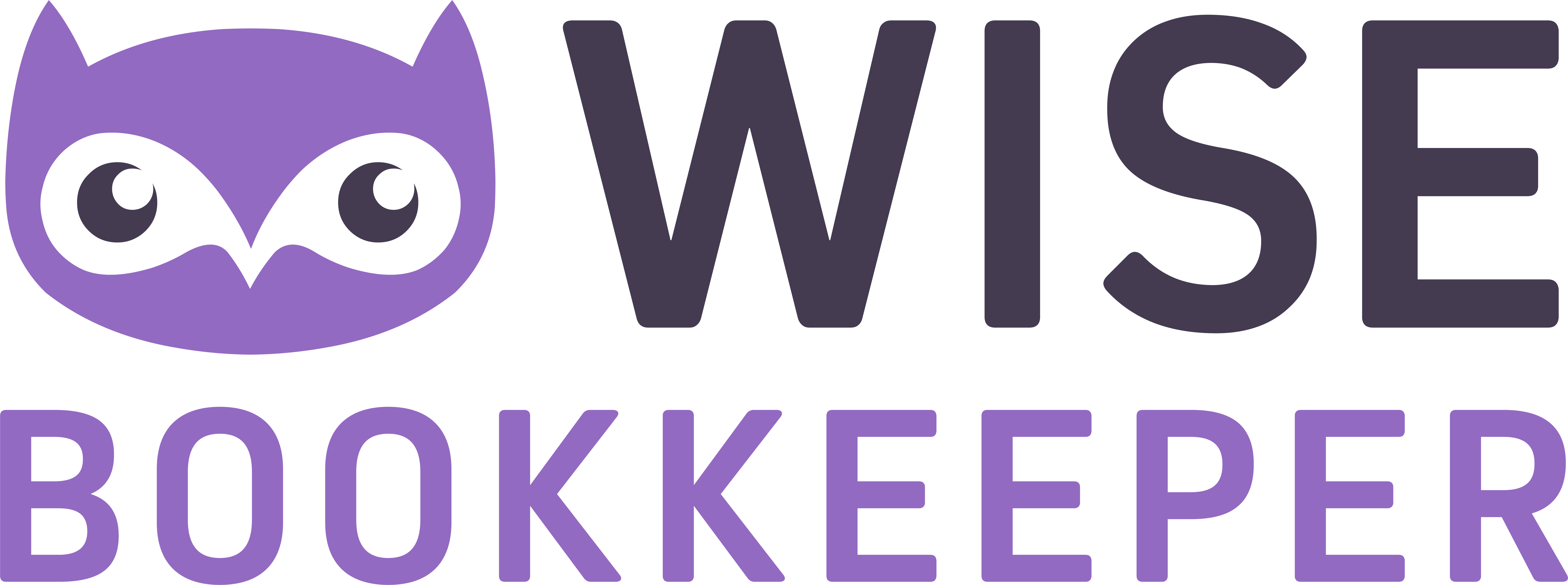Wise Bookkeeper Blog

How to Get the Most Out of Your Bookkeeping
Effective bookkeeping is vital for roofing companies. Accurate financial tracking not only ensures smooth day-to-day operations but also helps you make smarter business decisions. Here’s how you can maximize the benefits of your bookkeeping system:
1. Use Industry-Specific Software: Generic accounting software might not solely meet the needs of roofing businesses. Invest in software that can handle job costing, labor tracking, and materials management.

Here are a few examples of industry-specific software designed for roofing companies:
JobNimbus: A cloud-based CRM and project management tool that integrates job tracking, task assignments, and financial management. It’s designed specifically for contractors, including roofers, to streamline their operations.
AccuLynx: Offers features like material and labor tracking, estimating, job scheduling, and invoicing. It’s built for roofing contractors, making it easy to manage projects from start to finish.
RoofSnap: Specializes in measuring roofs and creating estimates. It also includes project management tools like scheduling and invoicing to help roofers stay on top of their jobs.
BuilderTrend: While not exclusively for roofers, it’s widely used by contractors in the construction industry. It helps with job costing, project scheduling, and customer management.
Knowify: A software designed for subcontractors, Knowify includes tools for estimating, job costing, time tracking, and invoicing, all tailored to the needs of roofing companies.
These programs are designed to address the unique challenges roofing contractors face, such as job costing, estimating, and managing projects with fluctuating timelines and material costs.
2. Track Job Costs Closely: Keeping detailed records of labor, materials, and overhead per project is crucial. By doing so, you can assess profitability accurately and spot potential areas for cost-cutting.
Here are a few examples of how you can track these costs:
Use Job Costing Software
- Tools like AccuLynx or Knowify can help you input detailed information on labor, materials, overhead, and other expenses specific to each project.
- Example: You can create a job in the software, track the hours worked by each employee, input material costs, and see a running total of expenses versus the estimated budget.
Track Labor Hours

- Set up a system (digital time tracking or manual timesheets) to record hours spent by each crew member on a specific job.
- Example: Use an app like ClockShark to track workers’ time on each roofing project. Labor costs will be automatically assigned to the correct job.
Monitor Material Usage
- Record all materials used for each roofing project, from shingles to nails. You can track material costs by saving invoices and purchase orders tied to the specific job.
- Example: For every job, keep a record of material deliveries and the cost per unit (e.g., price per bundle of shingles). Compare the projected amount with actual usage.
Record Equipment and Tool Usage
- Track the use of heavy equipment or rented tools, allocating costs to each project.
- Example: If you rent scaffolding for a specific job, note how long it was in use and its daily rental cost, then assign those costs to the job.
Allocate Overhead Costs
- Overhead (e.g., office expenses, fuel, and insurance) should be distributed across all active jobs based on a percentage or specific criteria.
- Example: If your company spent $10,000 on overhead this month and handled 10 roofing projects, allocate $1,000 in overhead to each job for a more accurate cost assessment.
Use Purchase Orders
- Ensure every job-related purchase is linked to a specific project via purchase orders.
- Example: Every time materials are bought for a project, create a purchase order in your system that is tied to that job, so costs can be easily tracked.
Review Job Cost Reports

- Generate job cost reports monthly or weekly, comparing estimated costs to actual expenses for labor, materials, and overhead.
- Example: A job cost report might show you that your labor expenses are higher than estimated for a particular project, allowing you to make adjustments before it impacts profitability.
Tracking job costs in these ways will help you understand where money is being spent and ensure that each roofing job remains profitable.
3. Maintain a Paper Trail: Ensure all receipts, invoices, and purchase orders are saved, either physically or digitally. This will make audits smoother and help resolve disputes quickly.
Roofers should keep receipts for the following items to ensure accurate job costing, tax deductions, and financial tracking:
Materials:
- Shingles, tiles, underlayment
- Nails, screws, and fasteners
- Sealants, adhesives, and coatings
- Flashing and gutters
- Ventilation systems
Tools and Equipment:
- Ladders, scaffolding, and safety gear
- Nail guns, hammers, and drills
- Roofing knives, shears, and measuring tapes
- Rented equipment (e.g., cranes, dumpsters)
Labor Costs:
- Payroll expenses for employees
- Subcontractor payments
- Overtime or bonuses
Fuel and Vehicle Expenses:
- Gas for work vehicles
- Maintenance and repairs of company trucks or vans
- Vehicle rentals for transporting materials or workers
Permits and Licenses:
- City or county permits for roofing jobs
- Business licenses or certifications
Insurance and Bonding:
- Workers' compensation insurance
- Liability insurance
- Job-specific bonds
Marketing and Advertising:
- Flyers, brochures, or online ads
- Website maintenance or social media promotions
Office Supplies:
- Computers, printers, and software
- Stationery, business cards, and forms
- Phone and internet bills
Travel Expenses:
- Meals and lodging for out-of-town jobs
- Mileage reimbursements for employees
Miscellaneous Job Costs:
- Waste disposal fees
- Parking or tolls
- Weather protection (tarps, covers)
Keeping receipts for these items helps roofers stay organized, ensures compliance with tax regulations, and provides a clear picture of their business’s financial health.
4. Separate Business and Personal Expenses: Mixing these two leads to confusion and complicates tax filings. Have a dedicated business account and keep everything strictly professional.
Here are key ways to keep business and personal expenses separate:
Open a Separate Business Bank Account:
- Use a dedicated bank account for all business transactions, including income, expenses, and purchases.
Get a Business Credit Card:
- Use a business credit card for work-related purchases to track expenses easily and keep personal spending separate.
Set a Clear Salary or Draw:
- Pay yourself a regular salary or owner's draw from the business account, instead of mixing personal and business funds.
Use Accounting Software:
- Track business transactions separately using accounting tools like QuickBooks or Xero. Categorize personal and business expenses clearly.
Save Receipts for Business Purchases:
- Keep digital or physical copies of receipts for all business-related transactions. This will make bookkeeping and tax filing easier.
Reimburse Yourself Properly:
- If you need to pay for a business expense personally, document it and reimburse yourself from the business account. Avoid direct payments.
Avoid Comingling Funds:
- Don’t transfer money between personal and business accounts without proper documentation. Keep clear records for any necessary transfers.
Hire a Bookkeeper:
- A professional bookkeeper can help maintain accurate records and ensure personal and business expenses remain separate.
By following these steps, you'll keep your roofing business finances organized, simplify tax filings, and avoid potential legal complications.
5. Use Cash Flow Forecasts: Predicting cash inflows and outflows will help you manage your roofing company’s liquidity. This ensures you have enough cash for materials and labor during busy seasons.
Here are effective ways to monitor cash inflow and outflow for your roofing business:
Use Accounting Software
- Tools like QuickBooks, Xero, or FreshBooks can track all transactions in real-time, providing clear reports on cash inflows (customer payments) and outflows (expenses, payroll).
Create Cash Flow Statements

- Regularly generate cash flow statements that summarize your cash inflows (sales, loans) and outflows (expenses, taxes, payroll) over a specific period, such as weekly or monthly.
Track Accounts Receivable (AR)
- Keep a close eye on outstanding invoices and ensure timely follow-up on late payments. Use software or a spreadsheet to list due dates and amounts.
Monitor Accounts Payable (AP)
- Record all upcoming expenses like vendor payments, utility bills, and payroll. Set reminders for due dates to avoid missed payments or overdrafts.
Set Cash Flow Projections
- Forecast your cash flow for the next few months by estimating expected income and planned expenses. This helps you anticipate cash shortages or surpluses.
Establish a Budget
- Create a budget for your roofing business to control spending. Compare actual cash flow against your budget to identify areas where you’re overspending.
Use Bank Reconciliation
- Regularly reconcile your bank statements with your accounting records to ensure accuracy in tracking inflows and outflows.
Track Job-Specific Cash Flow
- Break down cash flow per project. Track costs for each job versus incoming payments to ensure each project remains profitable.
Maintain an Emergency Fund
- Set aside a reserve for unexpected expenses or slow periods. Regularly monitor the reserve and top it up as needed.
Monitor Profit Margins
- Keep track of the profit margins on every job by comparing costs to revenue. Consistently reviewing this will help you understand where cash flow is strongest or weakest.
These practices will help ensure a clear picture of your roofing company’s cash position and allow you to manage your business finances more effectively.

6. Review Reports Regularly: Monthly financial reports like balance sheets and profit and loss statements can give you insights into your company’s financial health. Make it a habit to review them and adjust your strategies as needed. For more information on what financial reports you should be using regularly, see my blog "Essential Financial Reports for Your Business".
7. Stay on Top of Tax Deadlines: Roofing businesses have unique tax considerations, such as sales tax on materials. Stay organized to avoid penalties and take advantage of deductions.
Here are some key tax deadlines roofers should be aware of in the U.S.:
Quarterly Estimated Taxes
- Roofers who are self-employed or operate as sole proprietors must pay estimated taxes quarterly:
- April 15: First-quarter payment
- June 15: Second-quarter payment
- September 15: Third-quarter payment
- January 15 (following year): Fourth-quarter payment
Self-Employment Taxes
- Due quarterly, these cover Social Security and Medicare contributions if you're self-employed. The same quarterly estimated tax dates apply.
Sales Tax (if applicable)
- Roofers in states with sales tax must file sales tax returns based on local laws. Deadlines vary: Monthly, quarterly, or annually depending on the state.
- Example: In Texas, sales tax is typically due monthly by the 20th of the following month or quarterly by the 20th of the month following the end of the quarter.
Payroll Tax Deadlines
- If you have employees, payroll taxes must be deposited either monthly or semi-weekly depending on your business size:
- Monthly payroll deposits are due by the 15th of the following month.
- Quarterly payroll tax returns (Form 941) are due:
- April 30: First-quarter
- July 31: Second-quarter
- October 31: Third-quarter
- January 31 (following year): Fourth-quarter
Annual Business Income Tax Returns
- March 15: S-Corporations and partnerships (Forms 1120-S or 1065)
- April 15: Sole proprietors and single-member LLCs (Schedule C, filed with personal tax return Form 1040)
- April 15: C-Corporations (Form 1120)
1099-NEC Filing for Subcontractors
- If you hire subcontractors, file Form 1099-NEC for any who earned $600 or more during the year.
- January 31: Forms must be sent to subcontractors and filed with the IRS.
State Income Tax
- If your state has income tax, state tax deadlines typically align with the federal deadline of April 15, but some states may vary.
State Franchise Tax
- If your state has franchise tax or reporting requirements for registered LLCs, you may need to file. Check with your State's business administration or comptroller for more information.
By keeping track of these deadlines, roofers can avoid penalties and ensure compliance with both federal and state tax regulations.
8. Monitor Labor Costs: Roofing jobs are labor-intensive. Tracking hours and overtime can prevent your payroll from eating into profits. For more information on managing payroll for your business, see my blog "Managing Payroll for a Roofing Company".
9. Automate Repetitive Tasks: Automated invoicing and payroll processing can save time and reduce errors.
Here are some tips for automating repetitive tasks in a roofing company to save time and increase efficiency:
Use Project Management Software
- Implement tools like JobNimbus or AccuLynx to automate job tracking, scheduling, and task assignments. These tools can send automatic updates to your team and customers, reducing the need for manual follow-ups.
Automate Invoicing and Payments
- Use software like QuickBooks or Xero to automate invoicing, send payment reminders, and track overdue accounts. You can also set up automatic payment processing for recurring jobs or clients.
Automate Payroll
- Software like Gusto or ADP automates payroll, tax filings, and employee time tracking. It calculates deductions and ensures employees get paid on time without manual intervention.
Automate Document Storage and Sharing
- Use cloud-based storage solutions like Google Drive or Dropbox to store job-related documents. You can automate file sharing with clients, suppliers, or team members, ensuring everyone has access to updated information.
Automate Expense Tracking
- Use apps like Expensify or Receipt Bank to automate the process of capturing and categorizing receipts and expenses. These apps can sync with your accounting software for seamless tracking.
By implementing these automation tips, roofing companies can streamline operations, reduce manual errors, and free up time to focus on high-value tasks like growing the business.
10. Hire a Bookkeeper Familiar with the Roofing Industry: A knowledgeable bookkeeper who understands the specific needs of roofing businesses can provide tailored financial advice and support. For more information about choosing the right bookkeeper for your business, see my blog "Finding the Right Bookkeeper".
Effective bookkeeping provides the financial clarity needed to grow your roofing business and navigate seasonal fluctuations. It allows you to focus on delivering high-quality roofing services while ensuring your finances are in order.
© 2024 Very Good Business Services
Contact
kendra@wisebookkeeper.com
888-705-9609


